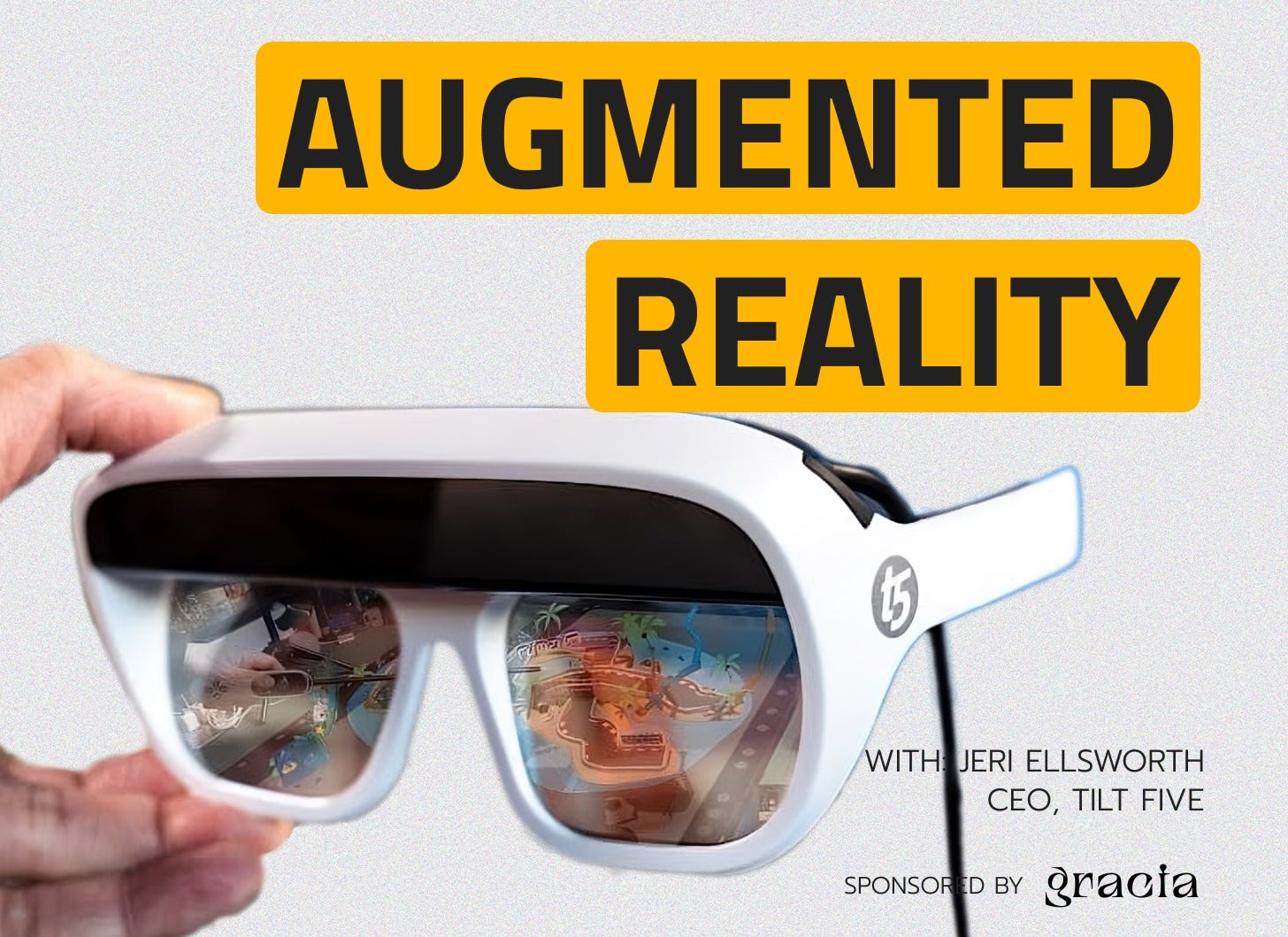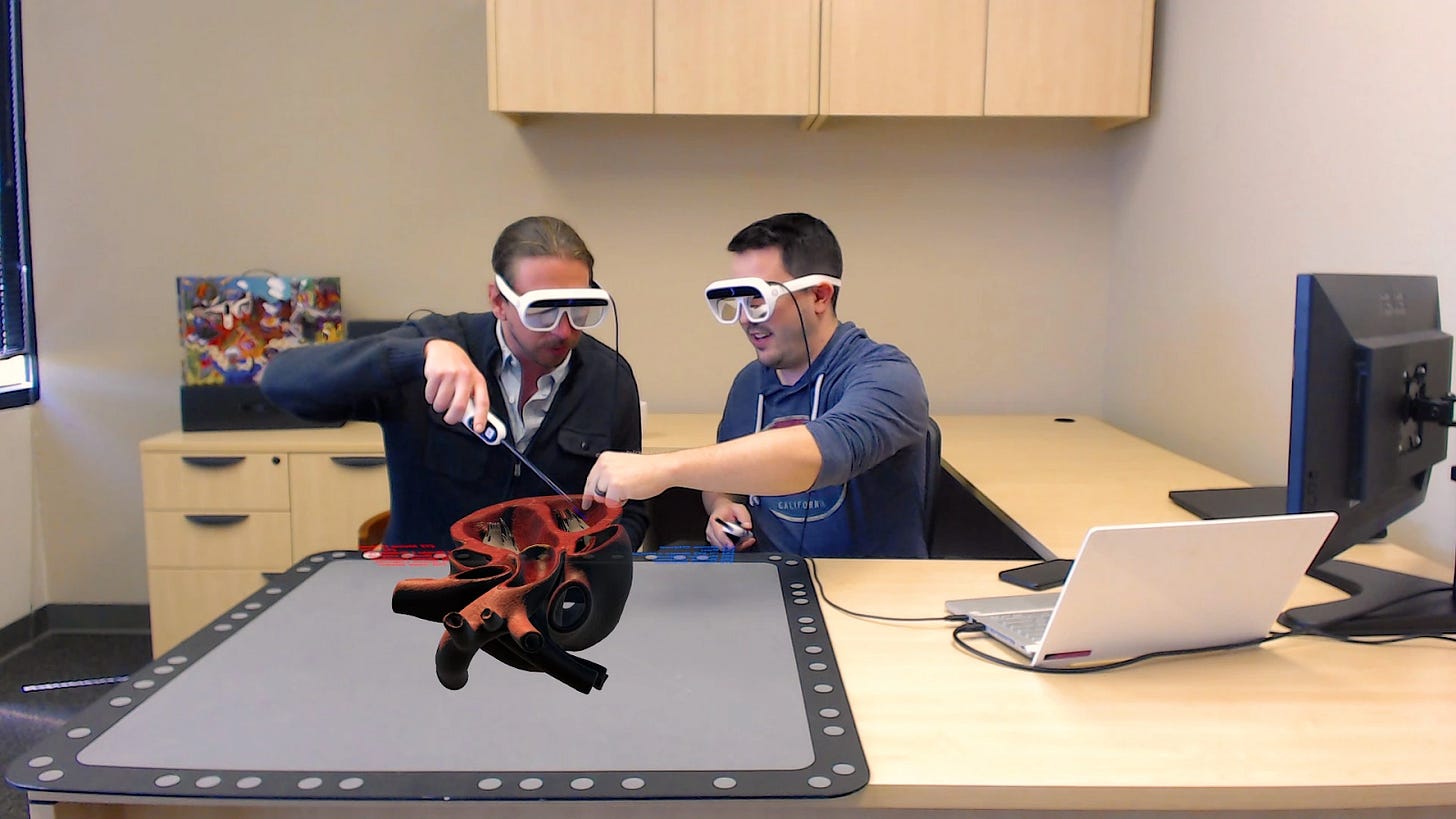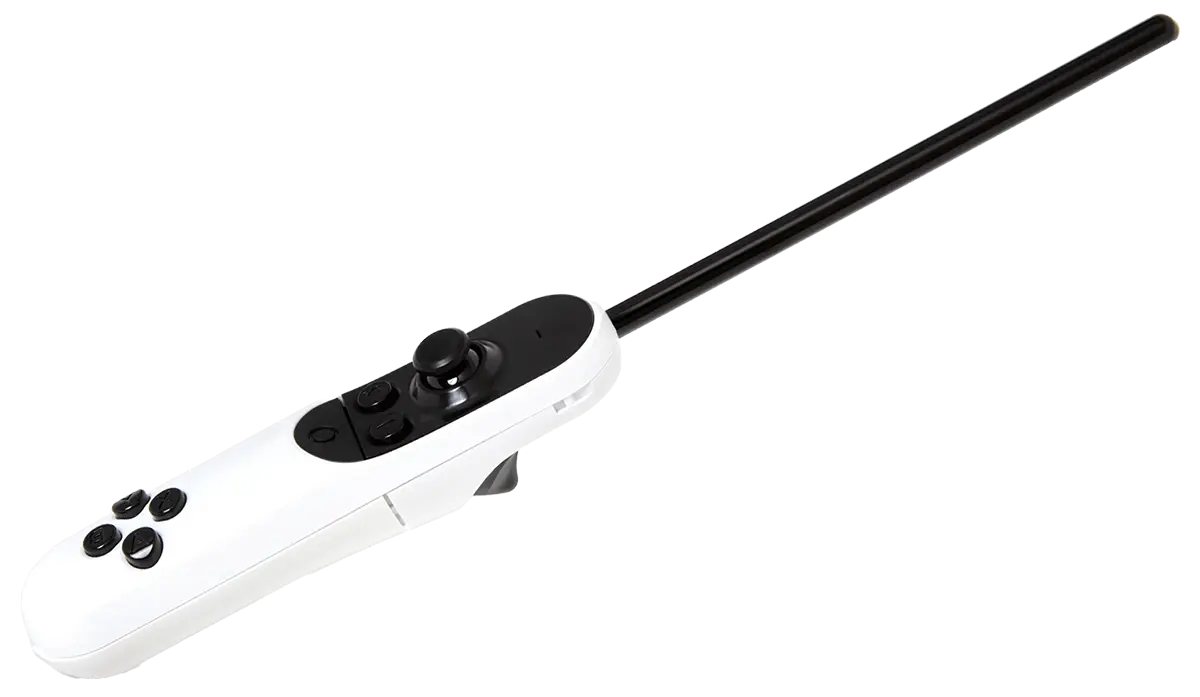👓How Tilt Five Solved the Biggest Problems in AR
Jeri Ellsworth is a renowned inventor, product creator, and engineer, known for pioneering new frontiers in gaming and immersive technology. As the CEO of Tilt Five, she has spearheaded the development of the world’s first augmented reality gaming system, bringing immersive tabletop gaming to life with holographic projections.
In this interview, Jeri shares:
- The biggest technical challenges in designing AR glasses
- Why Tilt Five focused on social, tabletop gaming instead of full-room AR
- What makes for a compelling AR experience
Before getting into the interview, I wanted to quickly introduce you to today’s sponsor Gracia AI. Gracia AI is the only app that allows you to experience Gaussian Splatting volumetric videos on a standalone headset, either in VR or MR.
It is a truly impressive experience and I recommend you to try it out right now on your Quest or PC-powered headset.
Interview with Jeri Ellsworth
What are the biggest technical challenges in designing AR glasses today?
Jeri Ellsworth: Oh, I think it comes down to two major challenges. First is human factors. Every face is different, visual perception varies, and people have different expectations about how these devices should work.
Second, you have to find the right use case. People expect AR glasses to replace their phone overnight, but that’s not how emerging technology evolves. Look at home computers, cell phones, and cars, they all started as niche products before becoming general-purpose devices. AR is going through that same process.
So what makes Tilt Five different from other AR glasses?
Jeri Ellsworth: The big difference is how we approach optics. Most AR glasses use waveguides or video pass-through, which have trade-offs. Waveguides are low brightness and small field of view, while video pass-through can feel unnatural, like you’re looking at the world through a camera.
At Tilt Five, we took a different approach. Instead of trying to project AR onto everything around you, we focus on a tabletop or screen space.
We use a special retroreflective surface that bounces light directly back to the glasses, meaning:
- No need for super-bright projectors
- Each user gets a unique 3D view
- Wide field of view and high contrast
The trade-off? You can’t walk around outside or have monsters jumping from your ceiling. But what we do, we do extremely well.
Can you explain what the experience actually looks like?
Jeri Ellsworth: Sure! Let me give you an example. Imagine sitting around a table with your friends, wearing Tilt Five glasses. A 3D dungeon map appears on the table, your character moves in real-time, and you can see monsters, puzzles, and hidden traps like they’re physically there. Or, imagine playing Pictionary in 3D, where you can draw in space, and the sketch floats between you and your friends. That’s the magic of Tilt Five: it makes AR a shared, social experience, rather than something isolating like VR.
Where are Tilt Five devices currently being used?
Jeri Ellsworth: We initially focused on household gaming, but now universities, governments, and enterprise customers are adopting it in huge numbers.
Universities are buying 50–60 units at a time for R&D labs and education
Manufacturing companies are using it to simulate production lines for executives
Flight simulators are being built for pilot training in mixed reality
Tilt Five is a venture-backed company, and investors always tell you to focus on one market at first, which is why we started with gaming. But as soon as we launched, other industries pulled us in different directions.
How does Tilt Five’s content ecosystem work? How do developers get involved?
Jeri Ellsworth: We built Tilt Five from the ground up to be developer-friendly. Most VR and AR multiplayer experiences are a nightmare to sync across multiple headsets. With Tilt Five, developers don’t have to do anything special, just keep plugging in headsets, and they automatically sync up.
One of our biggest surprises was seeing enterprise customers get excited about this. FEMA, for example, is using Tilt Five for first responder training, because they can easily build and edit emergency scenarios on the fly.
Let’s talk about input, why did you go with a wand instead of hand tracking?
Jeri Ellsworth: Great question! This is something I first explored when I ran Valve’s R&D department.
About 12 years ago, we thought ”What if we remove all buttons?” So we spent huge amounts of Gabe Newell’s money on hand tracking research and the results were frustrating. Hand tracking is cool for certain things, but it’s exhausting for precise or repetitive tasks. That’s why we still use keyboards instead of swiping on touchscreens for everything.
We tested 40–50 controller prototypes before settling on our wand. It looks a bit like a barbecue lighter, but everyone instantly knows how to use it: point, pull the trigger, tap things. Even my dad, who never plays games, figured it out immediately.
AI is dominating tech conversations right now. How do you see it intersecting with AR?
Jeri Ellsworth: AI is already incredibly useful behind the scenes. I personally use AI to write scripts in Unity and it speeds up prototyping so much, but when it comes to mainstream AI devices, I’m skeptical.
Devices like the Humane AI Pin and Rabbit R1 are struggling because AI assistants still feel clunky and unreliable. I think AI will be far more useful when paired with visual interfaces, rather than just audio or text prompts.
What’s your prediction for AR glasses over the next 3–5 years?
Jeri Ellsworth: Honestly? No quantum leaps are coming.
Waveguides and video pass-through still have fundamental limitations, and while companies like Meta and Apple are pushing forward, we’re not suddenly going to have lightweight, stylish AR glasses that replace phones.
What I do think will happen?
- More specialized AR devices like Tilt Five will gain traction
- Shared experiences will drive adoption more than individual ones
- Smaller, cheaper AR glasses (like an evolved Google Glass) could make a comeback
Give me a $99 Google Glass for quick, minimal AR interactions, and I’d buy it in a second.
Check out the full interview on your favourite platform 👇
That’s it for today, and don’t forget to subscribe to the newsletter if you find this interesting
See you next week






